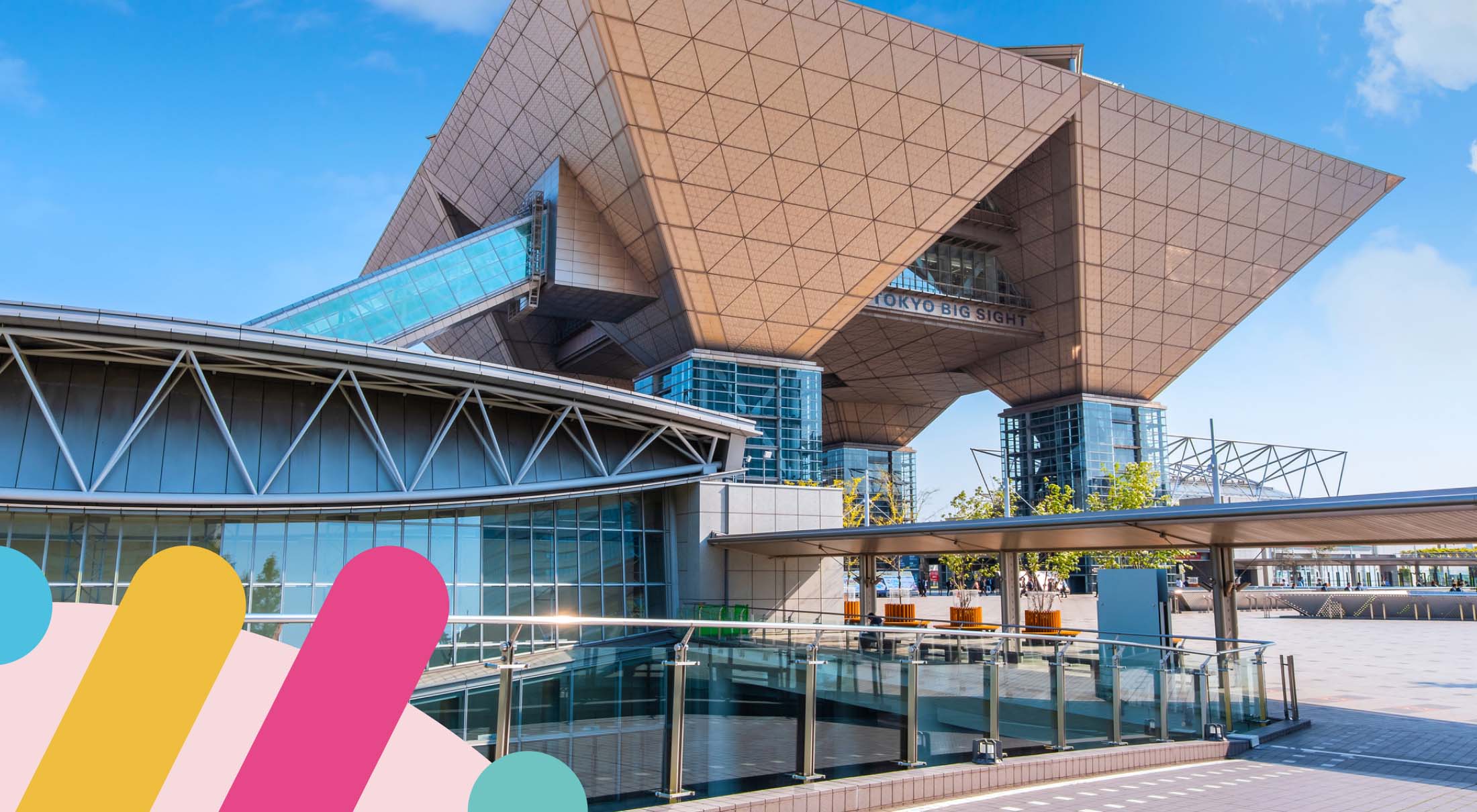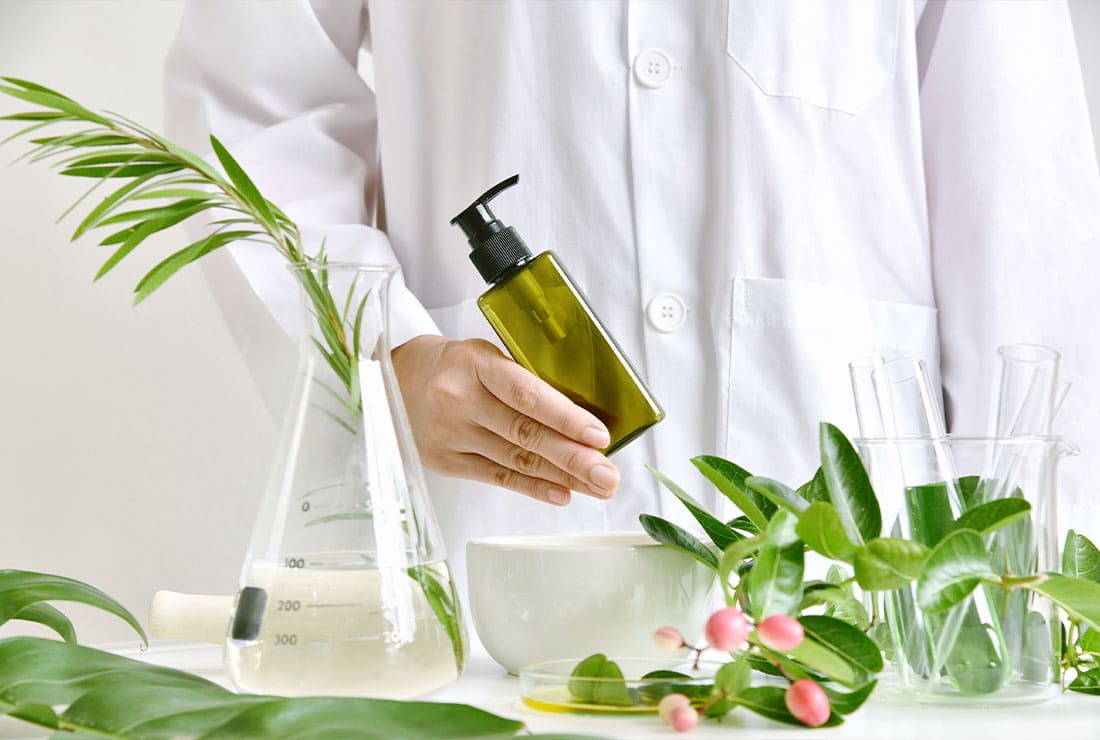Introduction
Japan’s wellness market is undergoing rapid transformation, driven primarily by its unique demographics. The country’s aging population—where the population aged 65 and over already accounts for approximately 29.1% as of 2023, a world-leading figure, with projections for continued growth (Cabinet Office, Government of Japan)—is fueling massive demand for preventive health, diet, beauty, and mental well-being solutions.
This robust sector was valued at $241.2 billion in 2022, positioning it as the fourth-largest wellness economy globally (Pulse Marketing).
- Wellness Consumption Trends: Demand is accelerating across supplements, functional foods (like FOSHU-certified products), fitness technology, and experiential wellness, including spa and onsen (hot spring) tourism.
- Corporate Demand: The aging workforce and government initiatives are driving significant corporate demand for employee health management programs (a market growing at a CAGR of over 3% Grand View Research), elderly care innovations, and health-monitoring technologies.
- Tech Convergence: Telehealth, wearable devices, and wellness apps are gaining rapid adoption among health-conscious consumers and enterprises alike.
Why Trade Fairs Matter
In a market defined by deep relationships and high standards, trade fairs are indispensable tools for international expansion, offering a concentrated opportunity to accelerate business goals (AUMA). They serve as crucial checkpoints for:
- Networking with key buyers, distributors, suppliers, and strategic partners.
- Trend-spotting and competitive intelligence gathering.
- Direct sales, brand visibility, and qualified lead generation.
- Opportunity to test product concepts and refine brand messaging for the Japanese consumer.
*Note on Timing
Most major fairs are typically held annually in Tokyo. Exact dates may vary, and some events have adopted online or hybrid formats, especially in response to post-COVID-19 trends. Always confirm exact dates and venues via the official links provided in the following sections.
Why Japan: The Premier Market for Health and Wellness Innovation
Investing time and resources in Japan’s trade fair circuit offers access to a market unlike any other. Japan serves as a high-value entry point, combining sophisticated consumer demand with strategic regional significance.
- Mature, Health-Conscious Consumer Base: Japan is home to one of the most discerning and health-aware consumer populations globally. The market prioritizes quality, safety, and scientific validation in health products. With a historically long life expectancy and a focus on preventive care, the desire for products that support healthy aging is paramount (WHO Data on Japan).
- High Per-Capita Spending Power: Despite general economic fluctuations, consumer spending on health-related products, supplements, and functional foods remains high. This is particularly pronounced among the affluent elderly, who are willing to pay a premium for high-quality, effective solutions that address age-related health concerns (USDA Foreign Agricultural Service).
- Demand for Natural, Organic, and Sustainable Products: A clear shift is occurring, particularly in the beauty and personal care sectors, toward products emphasizing natural ingredients, clean labels, and sustainability. While the market is still establishing clear definitions, interest in organic and ethical sourcing is rising, creating opportunities for international brands with recognized certifications (Spherical Insights on Natural & Organic Cosmetics).
- A Hotbed for Elderly Care and Preventive Health: The unparalleled demographic shift—an aging society—makes Japan a living laboratory for future global health solutions. This drives continuous innovation and government support for technologies and services in long-term care, cognitive health, and lifestyle wellness, presenting unique B2B opportunities for suppliers.
- Key Gateway for Asia-Pacific Distribution: Positioned strategically and known for its high regulatory standards, Japan is often viewed by Asian consumers and regional distributors as a benchmark for quality. Securing a successful presence in Tokyo’s major trade fairs can lend significant credibility, acting as a powerful launchpad for subsequent distribution across the broader Asia-Pacific region.
What to Look for When Choosing Trade Fairs
Choosing the right trade fair in a dynamic market like Japan is a strategic decision that dictates your return on investment. With numerous events in Tokyo, selecting those that align precisely with your business goals is critical. Here is what to evaluate:
| Criterion | Description | Strategic Question to Ask |
| Event Scale | Assesses the fair’s size and reach: Visitor numbers, exhibitor count, and the balance between international and domestic focus. Larger fairs offer broader exposure, while niche events provide higher quality, targeted engagement. | Does this event draw a sufficient volume of my target demographic (e.g., thousands of B2B buyers) to justify the cost? |
| Topics Covered | Confirms the thematic relevance of the fair to your product category. Key wellness sub-sectors include: Functional Nutrition and Supplements, Fitness Tech, Preventive Health and Medical Devices, Beauty and Cosmetics, and Elderly Care technology. | Is my product a primary focus or a peripheral addition? Which specialized sectors within the fair directly relate to my business? |
| Audience Fit | Determines who attends the event—the most crucial factor. Distinguish between: B2B buyers (distributors, retailers, corporate clients) versus B2C consumers (direct sales), and Clinical/Medical professionals versus Lifestyle/Consumer wellness enthusiasts. | Am I seeking long-term distribution partnerships (B2B), or immediate market feedback and direct sales (B2C)? |
| Timing / Seasonality | Consider the annual schedule in relation to your product cycle. This is vital for product launch readiness and ensuring you have obtained necessary local regulatory approvals (e.g., FOSHU certification, quasi-drug status). | Does the fair date align with our product’s manufacturing, shipping, and regulatory timelines for the Japanese market? |
| Complementary Features | Evaluates additional engagement opportunities beyond the booth itself. Look for included features like Seminars and Keynote Sessions, organized Networking Sessions, and Experiential Zones (e.g., sampling areas, live demos) that boost visibility and thought leadership. | Can we secure a speaking slot or feature our product in a demonstration to increase authority and lead quality? |
Key Health & Wellness Trade Fairs in Tokyo
Tokyo’s exhibition scene features a range of annual, high-impact events crucial for market entry, covering everything from functional foods to clinical technology.
Note on Co-location: Several key events are strategically co-located to maximize cross-industry networking. For example, Wellness Tokyo is held alongside Wellness Food Japan, and the Wellness & Preventive Healthcare EXPO is a component of the larger MEDICAL JAPAN Tokyo week.
Wellness Tokyo
When | November |
Where | Tokyo Big Sight |
Overview | Deeply focused on holistic well-being: nutrition, fitness equipment, sleep/stress solutions, wellness technology, and emerging fields like femtech. |
Target Audience | Brands in health food and supplements; fitness tech and equipment providers; retailers and distributors seeking modern, holistic consumer offerings. |
Event Scale | Large-Scale: Often co-located with WFJ, aiming for 300+ Exhibitors and 30,000+ Professional Visitors across three days. |
Unique Features | Strong balance of B2B and consumer-facing appeal, known for numerous educational seminars and live product demonstrations. |
| Tips for Participants | Prepare interactive exhibits; ensure materials are well-localized; leverage the seminar program to position your company as a thought leader. |
Medical Japan Tokyo
| When | October |
| Where | Makuhari Messe (part of the massive B2B MEDICAL JAPAN Week). |
| Overview | Major B2B event focusing on preventive health solutions (devices, health management systems) and their integration with clinical, pharmacy, and elderly care sectors. |
| Target Audience | Companies providing medical devices, suppliers of nursing/elder care products, digital health and telehealth providers, and brands focused on proactive health management. |
| Event Scale | Massive B2B Platform: The entire MEDICAL JAPAN Week features hundreds of exhibitors and draws tens of thousands of trade visitors (doctors, hospital managers, distributors) seeking serious partnerships. |
| Unique Features | Integration with clinical and regulatory sectors provides unique crossover opportunities with hospital and elderly care buyers and decision-makers. |
| Tips for Participants | Study the Japanese regulatory framework in advance; prioritize networking with potential distributors in the associated Elderly Care and Digital Health exhibitions. |
Health & Wellness Japan EXPO
| When | February |
| Where | Tokyo Big Sight |
| Overview | One of Japan’s most established B2B expos. Covers supplements, functional ingredients, health foods, natural/organic products, and wellness OEM/ODM services. |
| Target Audience | Functional food and beverage brands; ingredient and raw material suppliers; beauty and wellness technology firms; and companies focused on natural, organic, and sustainability trends. |
| Event Scale | Major B2B Wellness Show: Recently reported attendance totals over 30,000 visitors (potentially combined with concurrent shows) for a comprehensive overview of the market. |
| Unique Features | With a history spanning over 40 years, it maintains a strong reputation among domestic industry stakeholders. Features highly effective segmented exhibition zones (e.g., Supplements Zone). |
| Tips for Participants | Utilize the dedicated organic & natural and supplements zones to target highly specialized buyers; use the show as a valuable platform to test market reception to new product claims. |
WELLNESS FOOD JAPAN
| When | July or concurrently with other health-focused events in November |
| Where | Tokyo Big Sight |
| Overview | Highly specialized on nutrition, covering health foods, functional foods, supplements, raw materials, sustainable foods, and innovative ingredients. |
| Target Audience | Ingredient and flavor technology companies; suppliers of healthy food/beverage raw materials; OEM/ODM partners; and retailer buyers specifically focused on the food and health sectors. |
| Event Scale | Focused B2B Nutrition: Often co-located with Wellness Tokyo, contributing to the show’s overall scale of 300+ exhibitors and 30,000+ trade visitors (see WT scale). |
| Unique Features | Its sharp focus on food and nutrition creates excellent opportunities for product sampling and connecting directly with food manufacturers and new product developers. |
| Tips for Participants | Bring high-quality product samples for tasting; be precise about the scientific validation and potential regulatory compliance (e.g., FOSHU status) of your ingredients. |
International Wellness Tourism Expo (iWT)
| When | June |
| Where | Tokyo Big Sight as part of a larger tourism trade show. |
| Overview | The only expo in Japan dedicated exclusively to the growing sector of wellness tourism, covering spa resorts, healthy food/travel packages, regional wellness facilities, and restorative hotel experiences. |
| Target Audience | Travel and hospitality brands; regional tourism boards and DMOs; wellness retreat operators; and experiential/restoration brands looking for cross-border exposure. |
| Event Scale | Niche/Growing Sector: Scale is generally smaller than the largest B2B shows but focused, drawing a highly specialized audience interested in regional development and global tourism partnerships. |
| Unique Features | Offers a unique cross-industry platform, fostering collaboration between the tourism sector, local government, and wellness providers. |
| Tips for Participants | Develop compelling narratives that blend traditional Japanese practices (like onsen or shinrin-yoku / forest bathing) with modern wellness concepts. |
Diet & Beauty Fair
| When | Mid-to-late September |
| Where | Tokyo Big Sight |
| Overview | Sits directly at the intersection of beauty and health/dietary solutions. Covers cosmetics, beauty equipment, professional beauty services, anti-aging products, and beauty-from-within supplements/drinks. |
| Target Audience | Cosmetic and skincare brands, aesthetic device manufacturers, ingredient suppliers for beauty products, and supplement companies whose product claims are tied to appearance. |
| Event Scale | Mid-to-Large Scale: Recent events reported 318 Exhibitors and over 15,000 trade visitors, with strong B2B focus on salon/spa professionals and beauty distributors. |
| Unique Features | A must-attend for any company leveraging the Japanese cultural philosophy that health is inextricably linked to beauty. |
| Tips for Participants | N/A |
SPORTEC
| When | Late July/early August |
| Where | Tokyo Big Sight or a similar large venue. |
| Overview | Japan’s largest international exhibition for the fitness, sports, and health industry. Covers fitness equipment, sports nutrition, training technologies, rehabilitation, sportswear, and digital fitness solutions. |
| Target Audience | Suppliers of gym and studio equipment, sports and recovery brands, nutrition/protein companies, corporate wellness solution providers for physical health, and providers of coaching/training services. |
| Event Scale | Japan’s Largest Sports Expo: Attracts 450+ Exhibitors and over 40,000 professionals (gym owners, corporate buyers, high-performance coaches). It is the definitive hub for physical activity in Japan. |
| Unique Features | The definitive hub for physical activity and performance in Japan, featuring nine specialized co-located expos ranging from sports science to recovery tech. |
| Tips for Participants | N/A |
Hospital, Pharmacy, Elderly Care & Related Fairs
*Information is best found on databases like JETRO’s J-messe.
| When | Multiple events are held throughout the year, with a cluster often in February or October (as part of MEDICAL JAPAN). Information is best found on databases like JETRO’s J-messe. |
| Where | N/A |
| Overview | Highly specialized, B2B industry verticals covering hospital equipment, pharmacy automation systems, elderly care / welfare equipment, robotics, assistive technology, and nursing care prevention services. |
| Target Audience | Companies providing OEMs and suppliers in medical infrastructure , assistive technology firms , and those offering specialized services for in-home care. |
| Event Scale | Less “consumer wellness” focused but represent massive B2B opportunities where regulatory adherence and long lead-time procurement are essential. |
| Unique Features | Focuses on the highly regulated, essential B2B sectors of medical infrastructure and assistive technology driven by Japan’s aging demographic. |
| Tips for Participants | Prioritize regulatory adherence and long lead-time procurement planning; be prepared for B2B transactions with institutional buyers. |
Emerging / Niche Events
*(e.g., Doomo Wellness Events)
| When | High-frequency, often monthly or quarterly, throughout the year. |
| Where | Hyper-local venues in central Tokyo (Shinjuku, Shibuya) and other major cities (Osaka). |
| Overview | Smaller, focused events that are generally not trade fairs, but concentrate on hyper-local business networking, relationship building, and information exchange. They often feature themed business matching (e.g., Wellness Professionals Meetup). |
| Target Audience | Startups, consultants, and individuals seeking to expand their immediate network with local professionals, secure immediate referrals, or engage in focused, themed business matching. |
| Event Scale | Hyper-local Networking: Scale is small and relationship-focused, designed for building trust (shin’yō) rather than large-scale exhibition. |
| Unique Features | Offers immediate, direct networking with local professionals and provides a platform to test ideas or seek referrals in a culturally sensitive, trust-first environment. |
| Tips for Participants | These events require cultural sensitivity and a relationship-first approach (shin’yō). Avoid hard-selling; focus on sincerity and mutual trust. |
Practical Tips for Doing Business in Japan: Mastering the Cultural Fundamentals
Success in the Japanese market often hinges less on the superiority of your product and more on your team’s ability to navigate the local business culture with respect, patience, and meticulousness. These practical tips are essential for professionals engaging at Tokyo’s trade fairs and beyond:
The Ritual of the Business Card (Meishi Kōkan)
- Always have business cards (meishi) ready: The exchange of a business card (meishi kōkan) is a formal ritual and a must-have first step in any professional encounter. Treat the card as an extension of the person—never write on a received card, fold it, or put it carelessly in a back pocket.
- Formal Exchange Expected: Present and receive the card with both hands and a slight bow, ensuring the information (ideally the Japanese side, if bilingual) is facing the recipient. Place received cards on the table in front of you during a meeting, often arranged by the seniority of your counterparts.
Networking and Relationship Building
- LinkedIn May Not Be Widely Used: While professionals with international experience use LinkedIn, many local Japanese businesspeople prefer other platforms (like Facebook for B2B) or rely heavily on direct, personal relationships and introductions. Local relationships and mutual trust (shin’yō) are paramount. Don’t rely solely on LinkedIn for follow-up.
- Focus on Building Trust First; Avoid Hard-Selling: Japanese business culture prioritizes establishing a relationship and mutual harmony (wa) before discussing specific deals. Aggressive or “hard-selling” approaches are considered rude and can quickly break trust. Be patient; demonstrate commitment and sincerity, and let the relationship mature before pushing for a contract.
Communication and Presentation
Interpreter/Translator Recommended: Even if your counterpart speaks some English, using a professional interpreter for important booth discussions, seminars, and meetings is highly recommended. Japanese business communication is rich in nuance and honorific language (keigo); a skilled interpreter ensures the correct level of politeness and avoids costly misunderstandings.
- Follow-Up is Expected and Essential: Don’t assume initial interest or a collected business card guarantees a deal. A structured, prompt, and sincere follow-up is necessary. This shows diligence and respect. Your first follow-up should be a thank-you, not an immediate sales pitch.
- Punctuality is Non-Negotiable: Arrive early for every meeting and trade fair slot. Being on time is a fundamental sign of respect in Japan.
Product and Regulatory Compliance
- Ensure Local Labeling, Packaging, and Regulatory Compliance: Japan has stringent import regulations, particularly for health foods, supplements, cosmetics, and medical devices.
- Products making health claims must comply with the Foods with Function Claims (FFC) or the rigorous FOSHU (Food for Specified Health Uses) frameworks.
- Health-related products must comply with the Food Sanitation Law and the Pharmaceutical and Medical Device Act (PMD Act).
- Consulting with a local regulatory expert before exhibiting is vital to ensure your product and its claims are legal for import and sale.
Conclusion
Tokyo presents one of the most compelling and high-value landscapes for the global health and wellness industry. The convergence of a deeply health-conscious, aging population and a sophisticated business environment makes the city’s annual trade fairs indispensable.
By meticulously navigating the calendar of events—from the broad industry scope of Health & Wellness Japan and Wellness Tokyo to the specialized B2B focus of MEDICAL JAPAN and WELLNESS FOOD JAPAN—you can strategically position your brand. Selecting the right fairs depends entirely on your specific sector (e.g., nutrition, tech, or tourism), your core objectives (sales, partnerships, or trend research), and your budget.
Ultimately, your success hinges on two key factors:
- Strategic Selection: Targeting fairs that offer the best overlap between your product category (functional food, fitness tech, elderly care) and the primary audience (B2B buyers vs. clinical partners).
- Cultural Intelligence: Demonstrating patience, respecting key business etiquette like the meishi kōkan, and committing to the long-term process of building trust (shin’yō) will open doors to loyal and highly valuable partnerships in Japan and across the Asia-Pacific region.
Consider attending multiple fairs across the wellness, medical, and tourism sectors to maximize market intelligence, gain multi-channel distribution insights, and cement your presence in this dynamic economy.
Ready to take the next step? Partner with Pulse Marketing. We specialize in localized health and wellness marketing, translating your brand’s global promise into the shin’yō (trust) and cultural precision essential for success in Japan. Contact us to build your targeted strategy today.”




